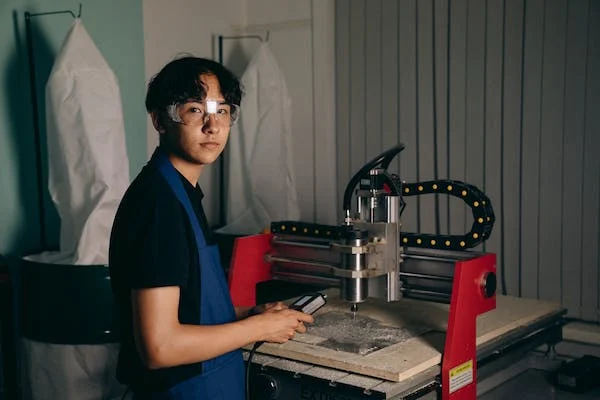Did you know that experts predict that before the decade ends, the global market for Computer Numerical Control (CNC) machines will reach a valuation of billions of dollars? Hence, to take advantage of the growing trend of technological innovation, it’s believed that numerous industries have started to adopt CNC machining as an integral part of their processes.
Why? It’s said that employing CNC machines boosts productivity. Additionally, unlike manually powered equipment, it provides a greater variety of applications and reduced error rates. If you’re interested in CNC machines, click here for a high precision CNC machine shop.
What Is CNC Machining
CNC machining is a computer-assisted and high-precision manufacturing technique. The procedure may be used to handle a wide variety of sophisticated equipment. Moreover, a software system directs how production equipment and machines are operated. A CNC machine will run autonomously after the programming is loaded into it.
In addition, a CNC machine enables the completion of three-dimensional (3D) cutting jobs with a set of coordinated commands. These machines are like robots for they may be programmed to do a variety of tasks. In other words, operating them only requires minimal human intervention.
How CNC Machining Works
The CNC method operates in opposition to the limits of manual operation which requires human operators to cue and direct machining equipment instructions. At first sight, a CNC machine may seem to be a standard collection of computer components. However, the software programs and interfaces used in CNC machining set it apart from all other types of computing.
Here’s the concept of how CNC Machining works:
- To function properly, the CNC must be provided with digital commands. These commands are often created using Computer-Aided Manufacturing (CAM) or Computer-Aided Design (CAD). The program generates G-code, which the CNC machine’s operator can interpret.
- Then, the G-Code may be used to program a wide variety of different functions in CNC machines. It manipulates cutting instruments along several axes to form the output.
- When a certain G-Code is created and sent into the system, operators are virtually unnecessary. Almost all of the job is done automatically for them by programming.
- CNC machines operate using a three-axis motion control system. The three axes are precisely positioned throughout their lengths of motion. The majority of axes are linearly oriented. However, some are rotary, so they revolve around a circular component.
To put it another way, the CNC machine includes a computer into which the job-specific software is programmed. The software inputs all the necessary operations and final measurements into the machine. Consequently, the computer understands precisely what has to be accomplished and does all cutting operations.
In other words, a CNC machine operates similarly to a robot, which must be programmed and then executes all of your commands. The CNC may be used to operate a variety of industrial machinery, including lathes, grinders, and drilling devices. The primary function of this equipment is to take away substrate from a given material to shape it properly, like round, rectangular, or square.
Traditionally, these devices were controlled by operators who were professionals in their functioning. Most tasks need precise machining, and the operator must be skilled enough to perform them.
In comparison, the operator’s involvement during the manufacturing process is said to be decreased with CNC machines. They simply have to input the programming instructions and attach any necessary tools into the machine and then it’ll take care of everything else. Machining processes are carried out by the computer per the directions given by the controller.
When the work is complete, the operator isn’t even required to remove it. The machine takes care of things for them and automatically moves on to the next task. Thus, the equipment may continue fabricating 24 hours daily without requiring much supervision. Of course, the controller will need to initialize it with the software and give the necessary raw material.
CNC Machines Today And Beyond
The earliest CNC machines were created decades ago. Nevertheless, the technology that they use to run and do their jobs has significantly improved which led to the development of the latest equipment and tools available today capable of an array of complex responsibilities.
Moreover, CNC machines are becoming ever more efficient as new technology and higher digital computing powers are introduced. In its years of existence, CNC machining has established itself as an effective approach for mass fabricating metal and plastic pieces.
Despite the rise in popularity of alternative production technologies such as 3D printing, CNC machining has continued to be a major solution for a wide range of fabrication applications. Plus, CNC machining is widely used in the aerospace industry to manufacture sophisticated and mission-critical parts.
Conclusion
CNC machining enables the development of elaborate and precise forms by utilizing the accuracy and automation of digital control. Historically, manual machining operations were controlled by fully trained and competent human workers.
What’s more, it’s said that CNC machining has essentially removed the possibility of human mistakes in many production activities. Its advanced programming ensures component accuracy and consistent compliance with precise specifications your business can enjoy.

